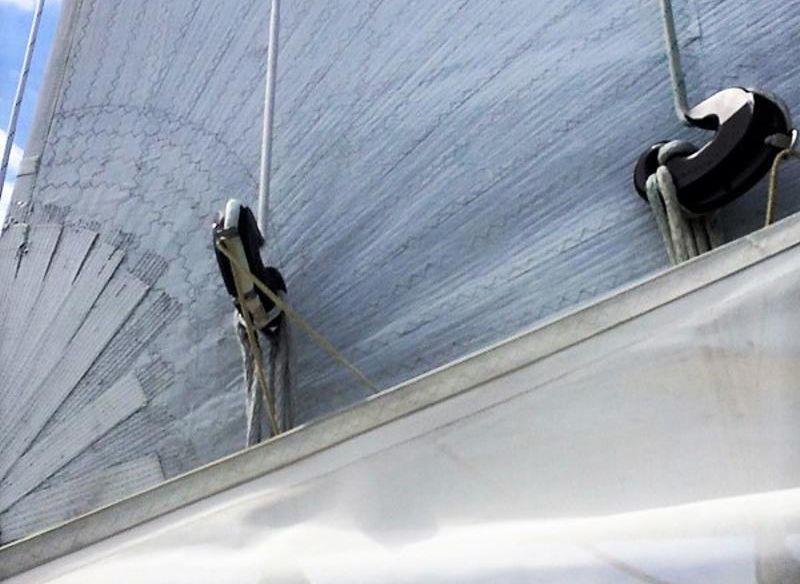
Reefing Your Mainsail: Are you onboard with reef hooks?
by Kerri Robson 4 Sep 2019 01:00 PDT

Karver Reef Hook KHR © Karver
Founded in 2004, Karver set themselves the goal of developing and manufacturing hardware for the latest generation of high-tech yachts... and they are succeeding with just that.
From cam cleats to the recently acquired Karverized Pontos winches Karver have a plethora of high-performance hardware and furling solutions.
An ingenious addition to their portfolio, Karver's KHR Reef Hook offers an unconventional way to reef your mainsail.
Originally designed for ocean racing multihulls, reef hooks are now being adopted by more and more cruising sailors, who are choosing to replace their current pennant reefing system with a hook.
So, how does it work?
A reef hook is installed close to the boom's axis with a lashing. A small diameter control line guides the hook to the mainsail reef point, where a sheathed, high load Dyneema strop is sewn into the sail. This control line is used to draw the sail loop to the hook where it automatically locks into place.
On the boom, another release line is used to unhook the KHR. Both lines can be operated remotely - from the cockpit or mast step.
To activate the Karver KHR reef hook, simply haul down on the mainsail to get the reef point close to the hook. Pull the hooking control line to guide the hook inside the Dyneema strop and haul the mainsail back up again.
To unhook the Karver KHR reef lock, again ease down on the mainsail - whilst pulling the release line to get the hook out of the loop, and then haul up the mainsail again.
Each reef point on the main sail should have its own hook; it is advisable to rig each hook with a tight lashing or to protect it with neoprene to prevent impact on the boom.
But what are the benefits of a reef hook?
There are lots of benefits that make a reef hook more advantageous than a traditional pennant reefing system:
- No line stretch - Textiles stretch under load. In a pennant system, line stretch is unavoidable and contributes to a loss of performance. A reefing hook avoids this, ensuring mainsail shape is stable and maintained.
- Weight saving on the boom - The remote command lines used to activate or release the hook can be smaller in diameter as they only need to operate the hook. As a result, say goodbye to big, high load reefing lines and high load jammers.
- No chafe - Reef lines will no longer chafe or break; lines are no longer permanently under tension in the jaws of jammers.
- Reliable -There are no moving parts, so no need to worry about mechanical failure.
- Reduces compression load - A Karver Reef Hook reduces the compression load in the boom.
In addition, sailors that have sailed with the Karver Reef Hook have stated that its simplicity and high performance make it an efficient reefing system with provides complete satisfaction out at sea, never letting a reef drop out.
The Karver Reef Hook is available in various sizes, with options available with 1T - 40T SWL (Safe Working Load).
To install the KHR, the position of the hooks on the boom must but be properly calculated, as the position of the hook must match up with the E-measurement (the distance from the aft-face of the mast to the reef clew point). If this is not done correctly, the outhaul or foot of the sail cannot be adjusted without the use of a hydraulic ram. The placement of the hooks can be fine-tuned after the first time at sea, in order to find the optimal position.
Want to make the move to a Karver Reef Hook? Explore the Karver Reef Hook range or for further advice contact us using this form.